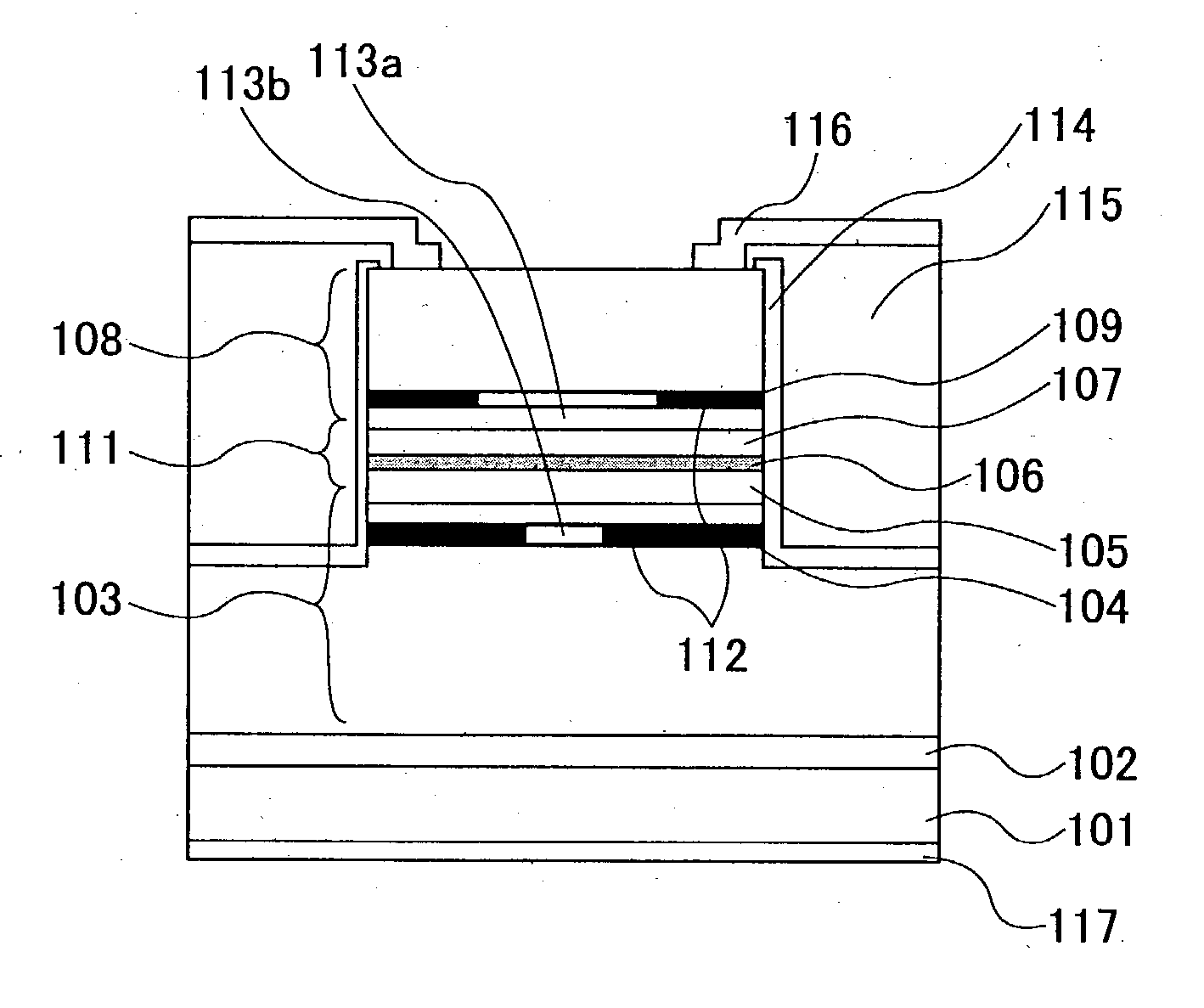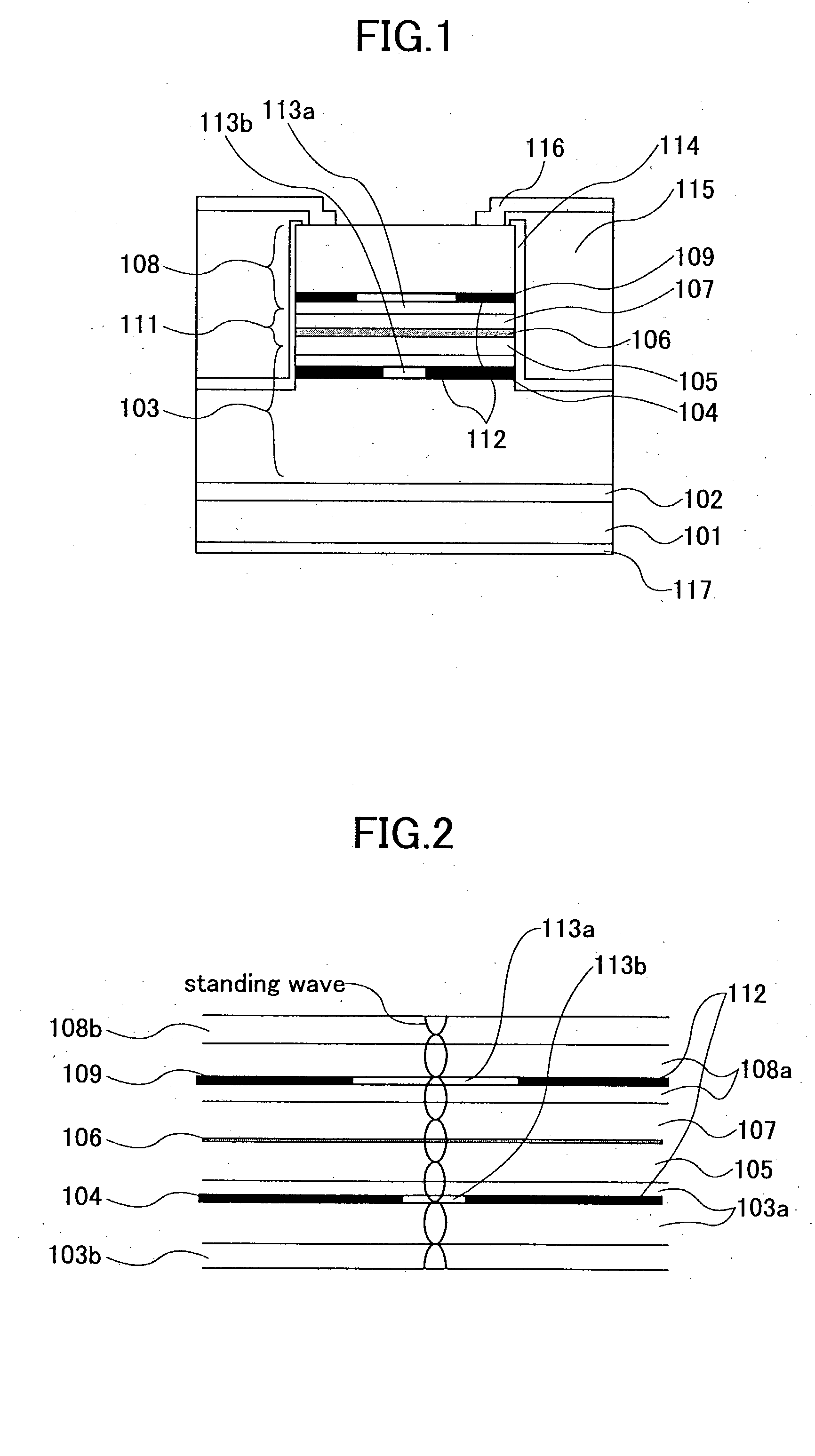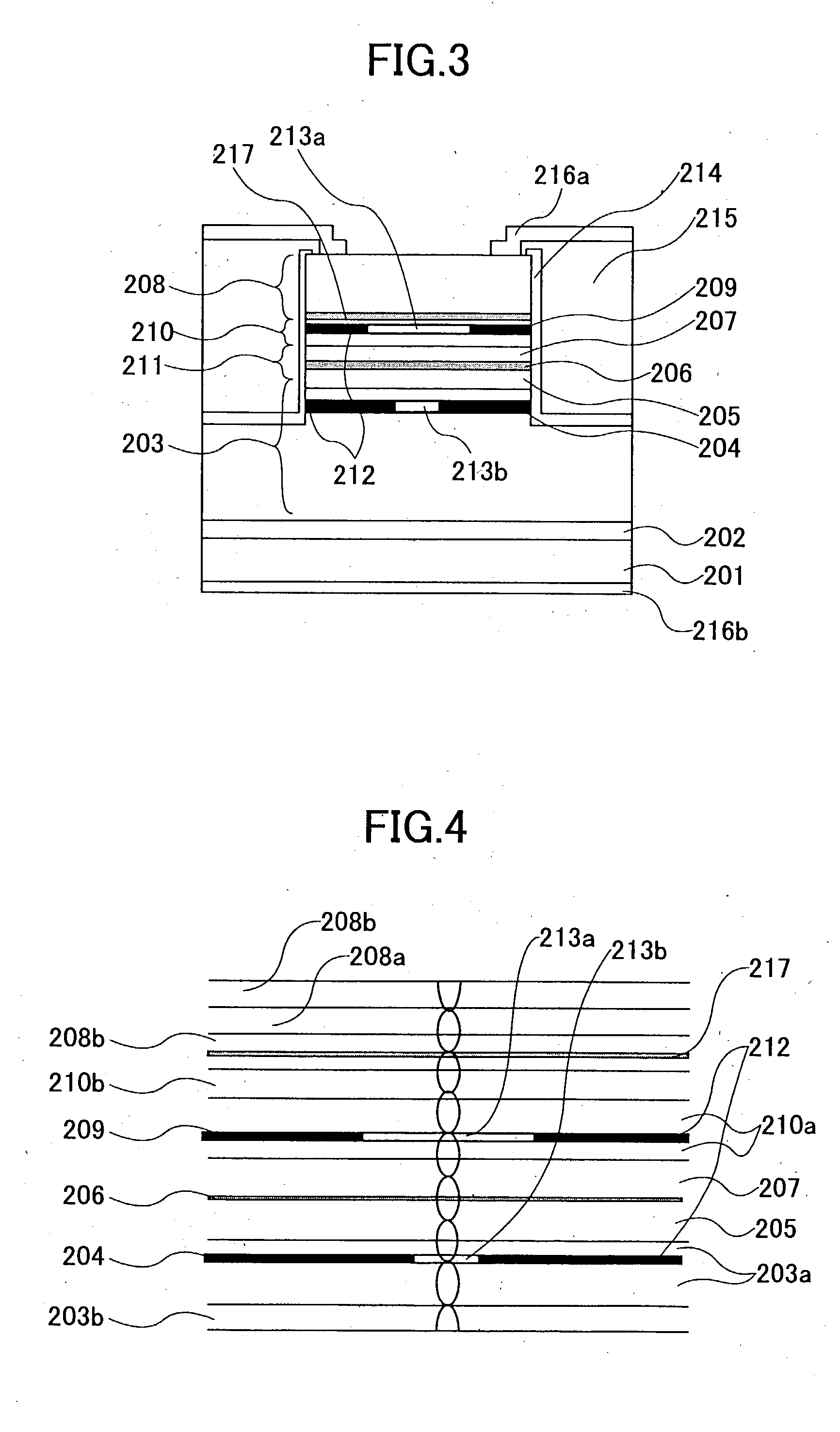Surface-emitting laser diode having reduced device resistance and capable of performing high output operation, surface-emitting laser diode array, electrophotographic system, surface-emitting laser diode module, optical telecommunication system, optical interconnection system using the surface-emitting laser diode, and method of fabricating the surface-emitting laser diode
- Summary
- Abstract
- Description
- Claims
- Application Information
AI Technical Summary
Benefits of technology
Problems solved by technology
Method used
Image
Examples
eighth embodiment
[0201] An eighth embodiment of the present invention is a surface-emitting laser diode that has the same structure as one of the surface-emitting laser diodes of the first through seventh embodiments, except that at least one of the distributed Bragg reflectors is a n-type semiconductor distributed Bragg reflector, and that a tunnel junction is provided between the n-type semiconductor distributed Bragg reflector and the active layer.
[0202] With this structure of the eighth embodiment that employs an n-type semiconductor distributed Bragg reflector with a small absorption loss, instead of a p-type semiconductor distributed Bragg reflector, a highly efficient surface-emitting laser diode can be obtained.
ninth embodiment
[0203] A ninth embodiment of the present invention is a surface-emitting laser diode that has the same structure as one of the surface-emitting laser diodes of the first through eighth embodiments, except that at least one of the distributed Bragg reflectors is a non-doped semiconductor distributed Bragg reflector or a Bragg reflector partially including a region formed by a non-doped semiconductor distributed Bragg reflector, and that an electrode for confining carriers is provided on a semiconductor layer between the active layer and the non-doped semiconductor distributed Bragg reflector or the region formed by a non-doped semiconductor Bragg reflector.
[0204] With this structure of the ninth embodiment that employs a non-doped semiconductor distributed Bragg reflector with a small absorption loss, a highly efficient surface-emitting laser diode can be obtained.
tenth embodiment
[0205] A tenth embodiment of the present invention is a surface-emitting laser diode having the same structure as one of the surface-emitting laser diodes of the first through ninth embodiments, except that the hole restricting structure in the hole passage is provided at a location corresponding to an antinode of the standing wave of oscillating light.
[0206] With this structure of the tenth embodiment, the optical mode control structure formed by the selective oxidation structure provided at a location corresponding to an antinode of the standing wave of oscillating light can retrain high-order transverse-mode oscillation with greater effect.
PUM
 Login to View More
Login to View More Abstract
Description
Claims
Application Information
 Login to View More
Login to View More - R&D
- Intellectual Property
- Life Sciences
- Materials
- Tech Scout
- Unparalleled Data Quality
- Higher Quality Content
- 60% Fewer Hallucinations
Browse by: Latest US Patents, China's latest patents, Technical Efficacy Thesaurus, Application Domain, Technology Topic, Popular Technical Reports.
© 2025 PatSnap. All rights reserved.Legal|Privacy policy|Modern Slavery Act Transparency Statement|Sitemap|About US| Contact US: help@patsnap.com



